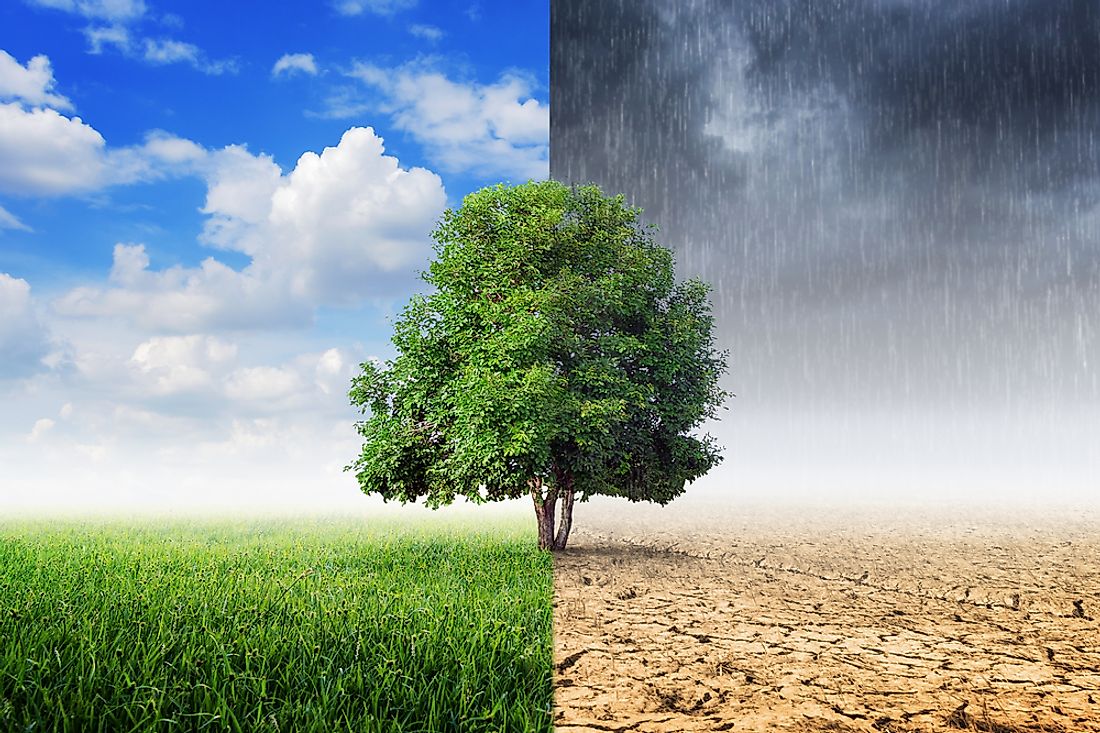What Is The Difference Between Weather And Climate?

What Is The Difference Between Weather And Climate?
Weather and climate are two atmospheric conditions whose distinction confuses many people around the world. The two terms have some similarities including the fact that they are both defined by solar energy. However, weather and climate are two distinct terms and have separate characteristics. Those who use weather and climate interchangeably might find the existence of climate change hard to believe because of the ever-changing weather, which is why understanding the distinction is so important.
Definitions
Weather is defined as the day-to-day fluctuation of temperature and precipitation associated with activities in the troposphere. Weather can also be defined as the degree of the temperature, the amount of moisture, and the cloud cover of the atmosphere. The study of weather is known as meteorology.
On the other hand, the climate is defined as the long-term assessment of the variation of humidity, wind, precipitation, temperature, and the atmospheric pressure of an area. Climate assessment is usually done in 30-year intervals and the study is known as climatology. Climate can also be defined as the long-term mean of weather patterns over an extended period of time. The climate of a location is defined by five components of the climate system which are the hydrosphere, cryosphere, atmosphere, lithosphere, and biosphere.
Determining Factors
Weather conditions can change drastically since they are based on several variables that occur independently. Variables include atmospheric pressure, temperature, cloud cover, humidity, and the speed and direction of the wind. Weather conditions can also be affected by terrestrial factors such as the presence of forests or large water bodies. Climate is more stable as it is a long-term analysis of weather patterns over a large region. Climatic conditions are affected by the latitude and altitude of an area, the area’s proximity to a large water body as well as the orientation of mountains towards ocean currents.
Forecasting Of Climate Versus Weather
Climatic conditions are less volatile, making forecasts of an area's climate easier and more accurate. It usually takes many years for the climate of an area to completely change. Weather conditions, on the other hand, are extremely volatile and can change from moment to moment. This chaotic attribute makes it difficult to accurately forecast the weather conditions of a particular area. However, meteorologists give short-term forecasts of the weather by analyzing the changes in barometric pressure as well as the degree of cloud cover in an area.
Effect Of Human Activity On Weather And Climate
For centuries, weather and climate have been a defining factor in the type of human activity that is conducted in an area. However, in recent years, human activity has altered weather patterns and caused climate change. Smog is formed from vehicle emissions which affect air visibility, causing widespread air pollution. Industrial emissions release acidic fumes which react with moisture in the atmosphere to form acid rain. The long-term emission of greenhouse gasses has been conclusively identified as a contributing factor to climate change. By shrouding the atmosphere, greenhouse gases are formed which increase atmospheric temperature and contribute to global warming.







